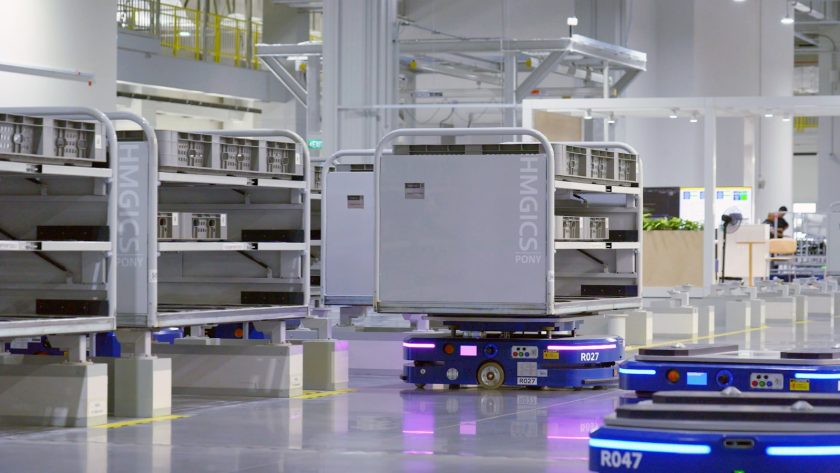Introduction to Autonomous Mobile Robots (AMRs) in Logistics
Autonomous Mobile Robots (AMRs) are revolutionizing the logistics and supply chain landscape. These robots, equipped with advanced sensors and AI-driven navigation systems, offer unprecedented flexibility and efficiency. As the logistics industry faces increasing demands for speed and accuracy, AMRs provide robust solutions to enhance operational workflows.
What Are Autonomous Mobile Robots?
AMRs are sophisticated robotic systems designed to navigate and perform tasks autonomously within a defined environment. Unlike traditional Automated Guided Vehicles (AGVs), which rely on fixed paths, AMRs can freely move, adapt to changing surroundings, and make real-time decisions.
Key Features of AMRs
- AI-driven Navigation: Utilizes algorithms and sensors for dynamic path planning.
- Flexibility and Scalability: Easy to reprogram and reconfigure for varied tasks.
- On-board Sensors: Equipped with LIDAR, cameras, and ultrasonic sensors for obstacle detection and navigation.
- Autonomous Decision Making: Capable of real-time problem-solving and route optimization.
- Interconnectivity: Seamlessly integrates with Warehouse Management Systems (WMS).
Applications of AMRs in Modern Logistics Systems
The deployment of AMRs spans various facets of logistics, bringing automation and efficiency to previously labor-intensive tasks. Here are some key areas where AMRs are making an impact:
Warehouse Automation
Perhaps the most prominent application of AMRs is in warehouse operations. They assist in picking, sorting, and transporting goods, thereby reducing manual labor and error rates. AMRs can work 24/7, significantly boosting productivity during peak periods.
Inventory Management
AMRs can conduct autonomous inventory counts using advanced RFID and barcode scanning technologies. They continuously update inventory databases, providing real-time insights and minimizing discrepancies.
Last-mile Delivery
AMRs are also increasingly used in last-mile delivery services. They navigate through urban environments to deliver parcels directly to customers, offering a contactless and efficient solution. This capability is particularly valuable in densely populated areas where traffic congestion is a major concern.
Safety and Compliance
AMRs are designed with multiple safety features, making them suitable for operation in environments alongside human workers. These robots adhere to strict safety standards and can operate in compliance with regulatory requirements, ensuring a safe work environment.
Challenges and Considerations
While the benefits of AMRs are compelling, there are challenges and considerations that logistics providers must address:
Initial Investment
The upfront cost of acquiring and deploying AMRs can be significant. However, the long-term return on investment (ROI), through increased efficiency and reduced labor costs, often justifies the initial expense.
Integration with Existing Systems
Ensuring seamless integration with existing Warehouse Management Systems (WMS) and Enterprise Resource Planning (ERP) systems is crucial. This integration allows AMRs to execute tasks efficiently and align with broader operational objectives.
Workforce Training
Introducing AMRs into the workforce requires employee training. Workers need to understand how to interact with these robots and leverage their capabilities to enhance overall productivity.
Technological Adoption and Scalability
The rapidly evolving nature of AMR technology necessitates adaptability. Logistics providers must stay abreast of the latest advancements and be prepared to scale their robotic fleet as needed. Scalability ensures that the benefits of AMRs grow in tandem with business expansion.
Future Trends in AMR Deployment
The future of AMRs in logistics is bright, with several trends set to shape their deployment and utilization.
Enhanced AI Capabilities
As AI technologies advance, AMRs will become even more intelligent. Future robots will have improved decision-making abilities, enhancing their efficiency and effectiveness in various logistics applications.
Collaborative Robots (Cobots)
Collaborative robots, or cobots, are designed to work alongside human workers, enhancing productivity while maintaining a safe environment. These robots will play a crucial role in hybrid automation systems, balancing human intuition with robotic precision.
Increased Adoption in Different Sectors
While AMRs are currently prevalent in warehousing and distribution, their adoption will spread to other sectors such as manufacturing, healthcare, and retail. These industries will leverage AMRs for various applications, from material handling to patient care.
Conclusion
In summary, Autonomous Mobile Robots are transformative agents in modern logistics systems. Their ability to navigate, adapt, and execute tasks autonomously paves the way for a more efficient and responsive supply chain. As technology continues to evolve, the role of AMRs will expand, driving further innovation and excellence in logistics operations.




